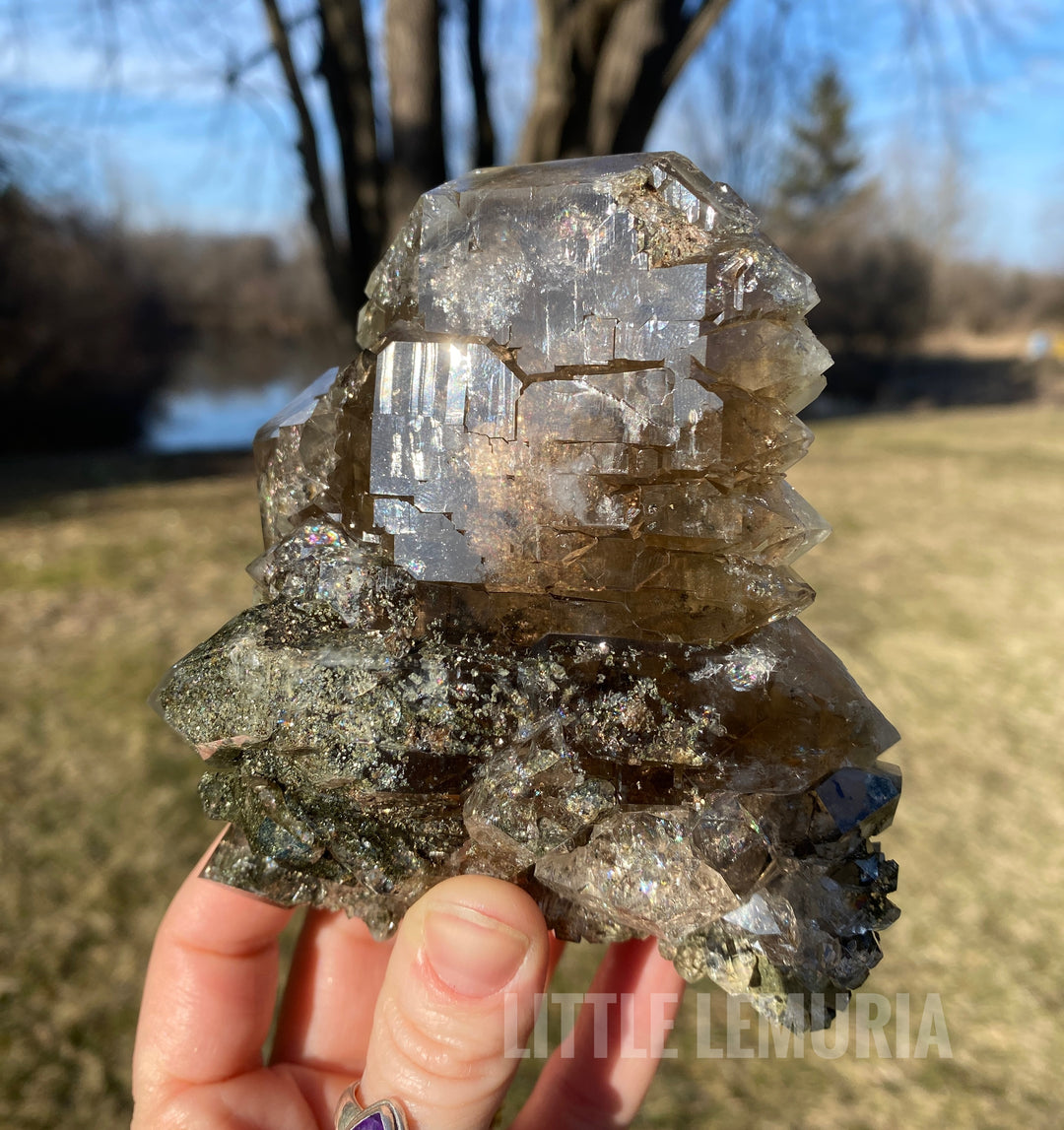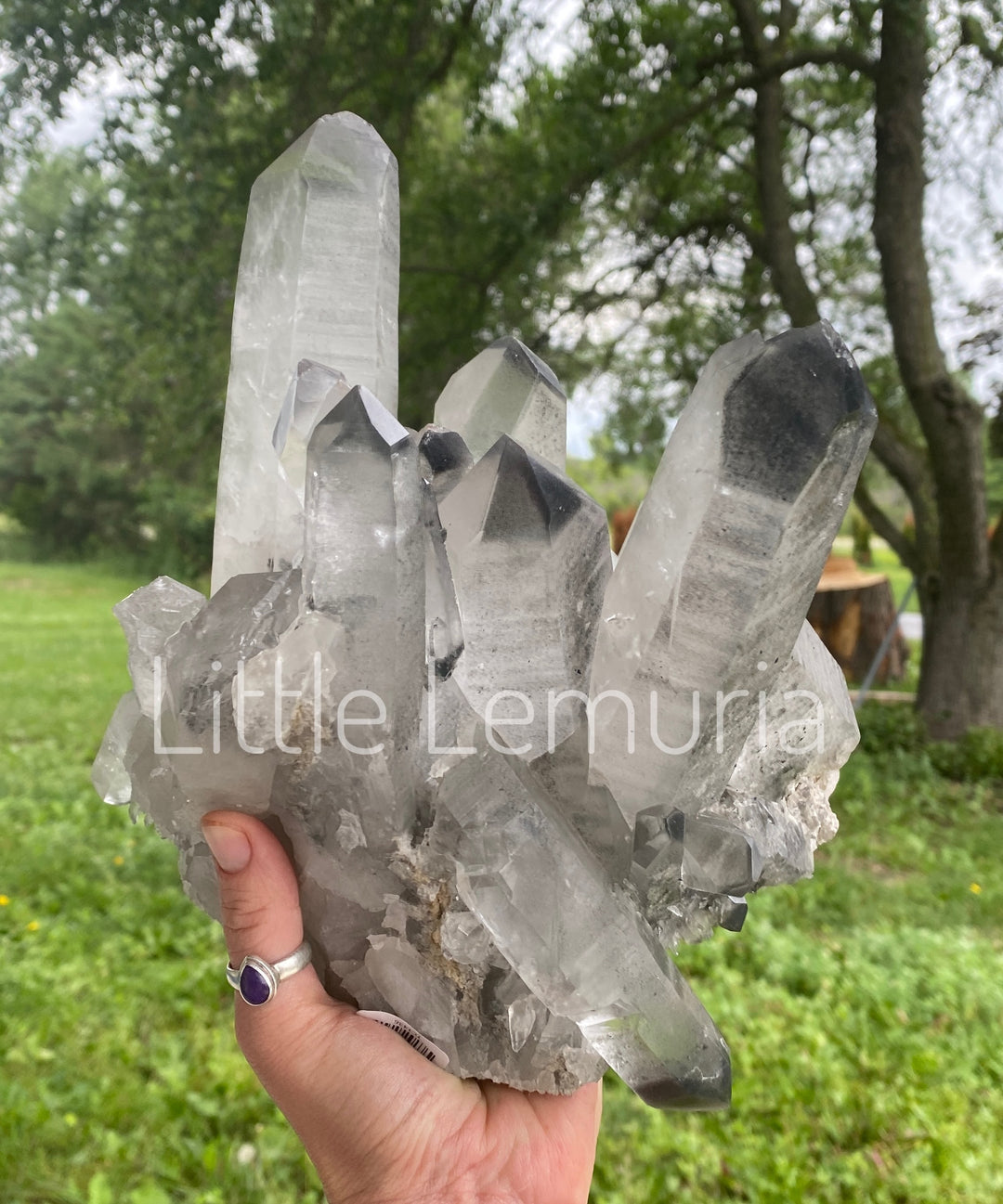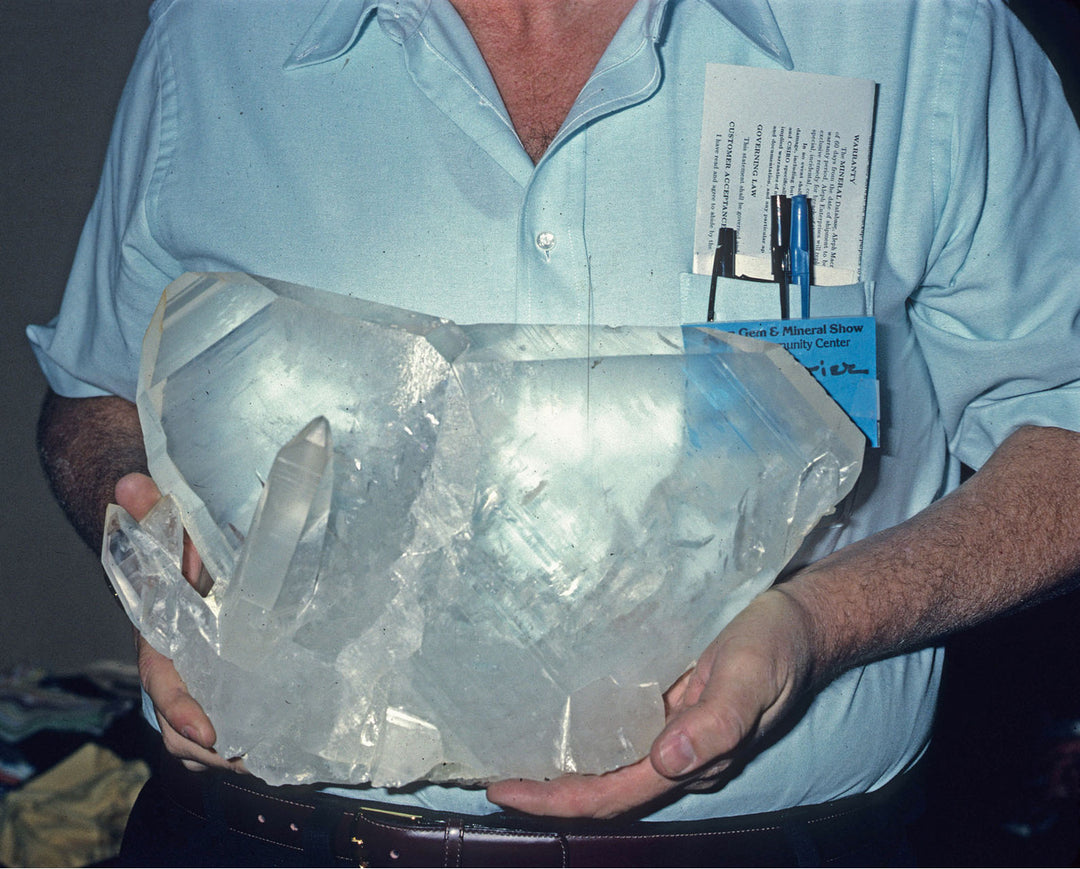Malachite Myths Debunked
This important follow-up to our blog “Straight facts on water and crystals” explores concerns about the safe handling and cleansing of malachite. In my thirst to dig deeper into the widespread misinformation about water and crystals, I stumbled upon countless posts, websites, and blogs that all made disturbing claims about the toxicity of malachite. It seemed everywhere I turned there were warnings about the dreadful probability of malachite becoming dangerously toxic if it were to get wet.

The most referenced reason behind malachite’s toxicity, was the allegedly dangerous copper content. This was confusing to me, so I began my quest for knowledge by presenting this statement to geologist Fred Krone: “Malachite is no more dangerous to get wet than the copper pipes used to bring water into homes.”
Lucky for us, his answer did not disappoint. His reply was this:
“I need to address this statement thoroughly. Simply put, it’s not that simple. I would consider that half a sentence. The other half of it being “… using similar water at a rapid flow rate for a short duration of time.”

The U.S. Environmental Protection Agency has a set of drinking water standards. These standards list a number of inorganic compounds that have been identified as harmful to your health in certain concentrations. The most concerning inorganic chemicals are (in alphabetical order):
- Antimony (Sb)
- Arsenic (As)
- Asbestos
- Barium (Ba)
- Beryllium (Be)
- Cadmium (Cd)
- Chromium (Cr)
- Copper (Cu)
- Cyanide (CN-)
- Fluoride
- Lead (Pb)
- Mercury (Hg)
- Nitrate / Nitrite (NO3 / NO2)
- Selenium (Se)
- Thallium (Th)
Go to the USEPA National Primary Drinking Water Regulations pages and review the Inorganic Chemicals list. The Radionuclides list also pertains to any rock that may be radioactive. For the purposes of simplicity, we will focus on the Inorganic Chemicals List. The link is: https://www.epa.gov/ground-water-and-drinking-water/national-primary-drinking-water-regulations If you want to know more about the chemicals in your local tap water, take a look at this page: https://www.ewg.org/tapwater/
Here are some helpful tips:
- mg/L is Milligrams per Liter or Parts per Million (ppm)
- μg/L is Micrograms per Liter or Parts per Billion (ppb)
- 1 ppm = 1,000 ppb; 1 ppb = 0.001 ppm
I highlight Copper and Lead on the list of inorganic chemicals listed by the USEPA. Both have health implications if ingested at certain concentrations. Which brings us back around to the original statement…
Copper and lead are both leached from copper pipes and the lead solder used to hold them together. Not all water will leach copper and lead from the pipes into the drinking water. This is where pH and duration of time are most important. The lower the pH, the more copper removed from a pipe or piece of malachite. The longer the lower pH water sits in the pipe or rests on the malachite, the more copper will be leached into the water. The same is true for lead.
pH is a measure of how acidic or basic something is. 7.0 is neutral, 1 is Very Acidic and 10 is Very Basic. Once water pH goes below 7, it becomes acidic – whether slightly acidic (6.5) or very acidic (1.0). When this happens, positive ions like Copper and Lead can be leached into the water solution. The lower the pH, the faster this happens.

In addition to pH, the duration of time the copper is exposed to water plays a notable role. The longer acidic water is exposed to something with copper or lead, the greater the concentration of copper or lead that will be absorbed into the water. Acidic water that has been flowing and not had time to sit in pipes will have very little copper, but acidic water that has been sitting in a pipe all night long will have a high concentration of copper.
So when someone makes a statement like - “Malachite is no more dangerous to get wet than the copper pipes used to bring water into homes” – make sure to add “which depends on the pH of your water and how long it is exposed to the pipe or the malachite.”

I am so grateful for Fred’s willingness to shed light on these confusing aqueous geochemistry questions that I am in no way qualified to be an authority on! For the sake of thoroughness I compiled a list of claims I found on the internet and will provide the facts below each claim. I am not referencing were the claims were found. I do believe people have the best of intentions when offering information but unfortunately in this case some have missed the mark.
Claim: “Even polished Malachite still has that high amount of copper which is lethal if ingested and you don’t have to eat or drink it to ingest it. Your skin is your largest organ and often eats whatever you put on it (or put it in).”
Fact: The National Center for Biotechnology Information published a report stating: “Copper delivery through skin can provide beneficial effects... Data on dermal toxicity caused by copper compounds is scant. Some recognized in vitro skin toxicity methods are unsuitable for all metal compounds.”
Suggesting malachite could be lethal with skin as the delivery method is absolutely untrue under normal circumstances.

Claim: Malachite contains arsenic
Fact: Malachite’s chemical composition is Cu₂CO₃(OH)₂ therefore this is an easy myth bust, it contains no arsenic.
Claim: Malachite releases toxic fumes when it gets moist, so the bathroom is the worst place to have it.
Fact: Malachite is a hydrated carbonate of copper formed by the evaporation of water as it passes through copper bearing deposits. When exposed to acidic conditions, humidity, or water, the malachite will react. Being a hydrated carbonate of copper, when acidic water is applied it may off gas carbon dioxide or oxygen. It does NOT off gas anything that is toxic.

Claim: Malachite is toxic when ingested or inhaled.
Fact: This is true, Malachite and many other stones are toxic when dust particles become suspended in the air. Protective equipment such as eyewear and a respirator should always be worn when cutting and polishing malachite.
In conclusion, the average malachite enthusiast is not going to be poisoned via their skin, blood, or by fumes in the air because of malachite getting wet. Does malachite react to water? The short answer is yes, but not at a rapid rate and certainly it is chemistry would not change so instantly that it was dangerously toxic. It is important to note that malachite should never be used as a gem elixir or gem infused essential oil. When doing lapidary work with malachite, protective equipment covering the eyes, nose, and mouth should always be worn to prevent ingesting or inhaling airborne particles.

If there are additional questions that remain unanswered or unclear please leave them in the comments and we will happily address them.
*Additional notes on malachite and water below based on reader submitted questions:
Q: Is there any difference when malachite comes in contact with either hot or cold water?
A: Steam is hot particles of water. When steam makes contact with copper or lead, pipes or malachite, it is hot and generally acidic. Warm water will absorb more ions in solution than cold water. And as the water (or steam) cools, it will release these ions from solution. So, when hot steam builds up on a piece of malachite and copper ions are absorbed, there is a chance that over time, as the water cools, it can leave copper stains on whatever surface the malachite is on. If you ingest this buildup, that can be very dangerous. So, if ultimately using water on malachite cold water is always better than warm.






